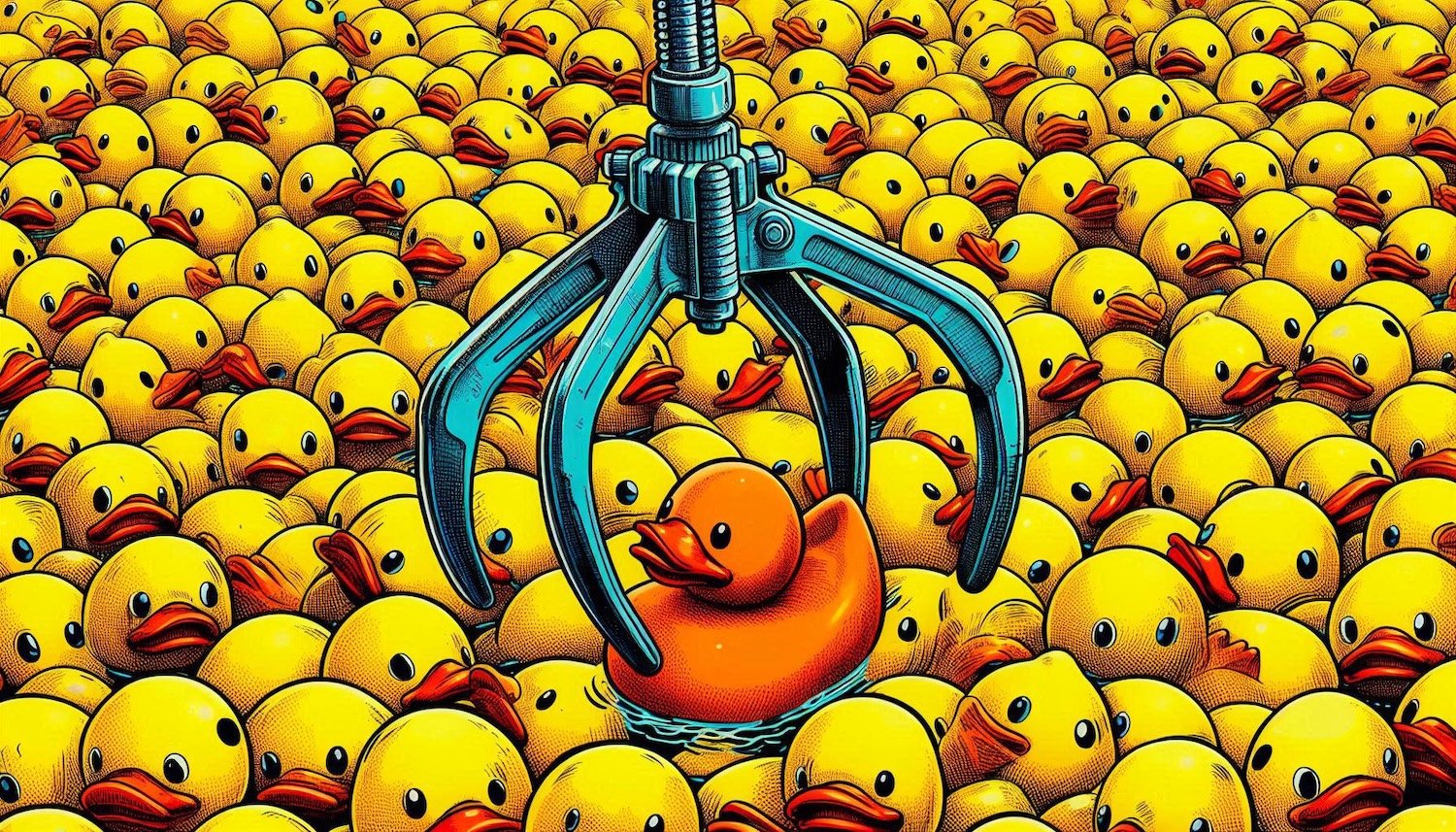
Swim outside your lane
Most brands claim they want to stand out. Few actually do.
Somewhere between committee feedback, brand guidelines, and “what competitors are doing”, bold ideas get watered down until they’re safe, familiar, and forgettable.
But the truth is, great brands don’t win by staying in their lane. They win by swimming outside it.

What a Satellite Brand is and How It Can Help Your Parent Company
In today's dynamic marketplace, the most resilient companies continually seek innovative strategies to expand their reach and enhance their brand portfolio.
One such strategy we often recommend in our marketing audits, is the creation of satellite brands. But what exactly is a satellite brand, and how can it benefit your parent company?
If you’ve not heard of a satellite brand, it’s an extension or offshoot of a larger, more established parent brand. While it operates with a degree of autonomy, it remains closely associated with the main brand, benefiting from its resources, reputation, and market presence.

Trip Flare Metrics
For most companies, the first signs of growth and future sales aren’t invoices or purchase orders, they’re small changes in awareness and engagement.
These signals are easy to overlook if you’re only focused on closing sales, but they’re often the first proof that your message is landing and that your target audience is taking notice. This is where the law of least mental effort really comes into play.

Escape the ‘Sea of Same’
It usually starts with best practice overload. Brands look to market leaders for inspiration, and before long, everyone is borrowing from the same style guides, stock photo libraries, and brand templates.
There’s a name for this silent killer of innovation, the “sea of same.”

What is ‘Mindshare’ and How Do You Measure It?
If you’ve not heard of it before, mindshare is the level of awareness, salience, and mental availability a brand occupies in the minds of its target audience.
It's not just about being known, it’s about being remembered first, associated with relevance, trust, and emotional resonance.

WTF is ‘Vibe Marketing’ and How Do You Use It to Grow?
In the digital noise of the 21st century, the brands that stand out aren’t always the loudest, they’re the ones that feel right. This is ‘vibe marketing’: a subtle but powerful approach that focuses less on selling features and more on creating a feeling.

What is a Brand Moat and How Do You Build One?
In today’s overcrowded digital landscape, standing out isn’t enough. The real goal is to stay ahead, even when imitators try to follow. This is where the idea of a brand moat comes in.

Confuse and Lose:
A common trap in copywriting , especially in tech, design, and specialist industries, is when we know a subject deeply, forget what it was like not to know. We assume readers understand the acronyms, the context, the systems… when in fact, we’ve left them behind at the first paragraph.

Breaking In Without Breaking Down:
The defence industry is one of the most sceptical, mission-critical markets in the world for good reasons.
In this space, your product (or service) is only part of the equation. What matters is how you show up, and whether the people you’re trying to serve believe in what you’re building.

What is Brand Excitement and How Do You Accurately Measure it?
Brand Excitement.
It’s not just about recognition or loyalty. It’s about buzz, emotion, movement.
And while it can feel intangible, it can be measured, if you know what to look for.

What Is ‘Root Cause Analysis’, and How Can It Help Your Brand?
Instead of simply addressing surface-level symptoms (like low traffic or poor conversion), Root Cause Analysis is a structured approach used to identify the true source of a problem, that helps you dig deeper to understand why the issue is happening in the first place.

Website Design vs. Presentation / Pitch Deck Design
When designing information transfer to drive sales conversions (bottom of the funnel) or boost brand awareness (top of the funnel), many businesses make a critical mistake, treating their website like an online pitch deck.
While both serve to communicate your brand’s value and the unique problems your product / service solves, they operate in fundamentally different ways.

What ‘Organisational Antibodies’ Are and How They Can Throttle the Vital Change Your Brand Needs to Survive in the Digital Era.
‘Organisation antibodies’ are the people, processes, and cultural norms within an organisation designed to protect it from outside threats.
But by resisting disruption and clinging to the status quo, they can also slow vital change that vital for an organisation’s survival and throttle the diffusion of innovation that’s crucial for thriving.
How can leaders recognise these internal barriers?

What is ‘Topical Authority’ and Why is Displaying it So Important to Your Brand?
In today’s digital landscape, brands are no longer just competing for visibility—they’re competing for your trust.

We Believe the Future of Brands Is In 3D – Here’s Why
At Hiatus, we believe great design isn’t just about aesthetics; it’s about experiences.
And right now, there’s one innovation that’s reshaping the future of digital design: 3D. From creating immersive environments to rethinking brand storytelling, 3D design is more than a buzzword—it’s a revolution.

The Role of Customer Experience Design (CXD) in Building Brand Loyalty
A single bad experience can put customers interacting with our brand again, let alone buying from us.
Whether we like to admit it or not, Customer Experience Design (CXD) is a key driver in organisational success.
But how can your business leverage CXD to create a ‘blue ocean’ in a crowded market and boost retention?

Rebranding? Start by Looking Under the ‘Hood
Rebranding can feel like an exhilarating leap forward for a company.
However, before diving into the creative aspects of designing a logo, selecting a colour palette, or drafting new slogans, it’s vital to take a comprehensive look “under the ‘hood” of your brand.

What is your ‘beachhead market’ and why you need to protect it before entering new ones.
So, you’ve decided it’s time to change and enter new markets?
Great! But what happens when a competitor comes along (also seeking new markets) and knocks your stable market position away from you?

What is a growth engine?
A growth engine is a system or process that a business or organisation uses to drive sustainable, scalable growth over time. It is the combination of all the strategies, tactics, and initiatives that a business uses to attract, retain, and monetise customers, and ultimately drive revenue and profitability. This how we make sense of it:

What is Brand Congruence and How Does it Impact Your Business?
In today’s saturated market, businesses often face the challenge of standing out while building trust and loyalty among customers.
One essential concept that significantly contributes to a brand's success is brand congruence.
But what exactly does it mean, and why is it so pivotal for businesses?
